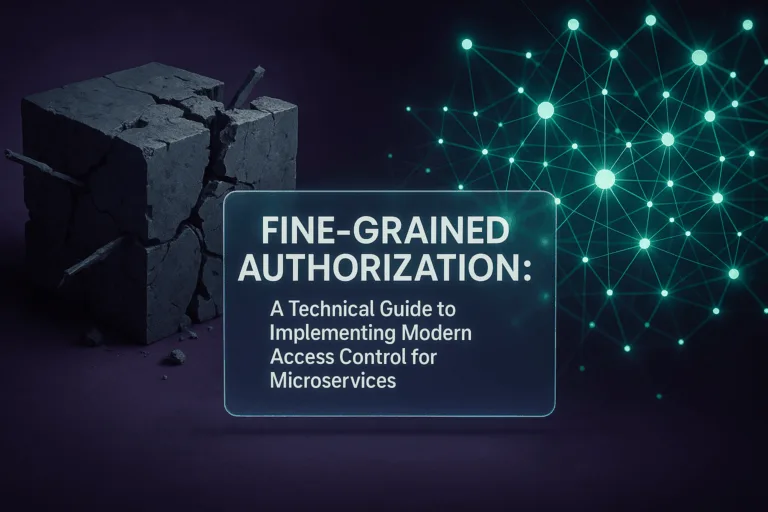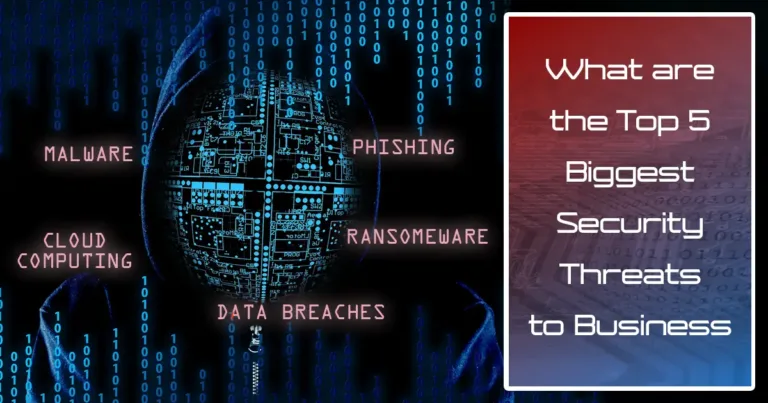Software and hardware will inevitably require an update and, in some cases, a complete overhaul. Maintaining your network’s security falls into this category. Using outdated software that no longer provides updates or support is vulnerable to exploitations and attacks. While you may be happy about saving money by not upgrading your software, it not only leads to vulnerabilities, but it can easily be exploited for an attack to be carried out, and in practically all cases, the attack is successfully carried out. Network Security Auditing ensures that vulnerabilities are identified and resolved before they can be exploited by malicious actors.
Assessing and strengthening your network should be done regularly, whether through penetration testing or vulnerability scans; identifying and mitigating those vulnerabilities cannot be ignored, especially if the network is being audited. Regular Network Security Auditing is a critical step in maintaining a robust and resilient network infrastructure. Knowing which tools are best for Network Security Auditing to assess and strengthen your network is a huge plus and will make any audit smoother. Here are 10 essential tools you must know to successfully pass any network security audit. Note that the list is not in an order ranking the tools but simply a list of the tools that should be used.
10 Must-Have Tools for Network Security Auditing:
Astra Security – No False Positives in Auditing
A unique security weakness tool that does not provide any false positives during any assessment or testing. This tool is capable of continually conducting penetration tests, making it ideal for Network Security Auditing tasks with a hacker-style approach using NIST and OWASP methodologies. Helping identify and mitigate any noted security vulnerabilities. Considered one of the most comprehensive tools currently available to completely assess your network, providing detailed and user-friendly reports with 24/7 customer support and a publicly accessible and verified penetration testing certificate, displaying their reliability. Astra Security provides unparalleled capabilities for Network Security Auditing, ensuring thorough assessments without false positives
NMAP – The Classic Network Mapper for Auditing
Network mapper, or known simply as NMAP, is a well-known and, in a sense, a classic network security auditing tool. Designed to rapidly scan even large-scale networks, it is an open-source tool, making it available to anyone, and it has been regularly updated since the 1990s. Being used through the CLI (command line interface), which, although it is a bit of a learning curve, and a user would have to know and be familiar with command prompts, it analyzes packets that are being sent, along with their responses, to be able to determine what hosts are available on the network.
NMAP is a trusted tool in the realm of Network Security Auditing, offering detailed scans for comprehensive network analysis. It provides information about available services, the type of packet filters/firewalls being used, and even what operating system is being used by the hosts. Instead of providing a summarized report, NMAP delivers more raw information, allowing users to have complete control over their network security audit..
Wireshark – Advanced Packet Analysis for Audits
Another well-known free and open-source tool, it works by analyzing packets and is primarily used for any troubleshooting, analysis, development of software, and communication protocol(s) within a network. Commonly used to analyze all data from a file, it can also capture and be used to view the contents of a network’s traffic. Available in both 32-bit and 64-bit versions, it also has a GUI (Graphical User Interface), which makes it possible to manage interaction. Wireshark’s packet analysis capabilities are invaluable in Network Security Auditing, offering insights into network traffic at a granular level.
OpenVAS – Linux-Based Vulnerability Scanner
Although primarily used with Linux, it is another open-source and free auditing tool for conducting complete scans for vulnerabilities in a network. Monitoring any open ports and the services it has access to, identifying known exploits, and even high-level web threat(s). A highly recommended tool due to its extensive database with roughly about 80,000 vulnerabilities and exploits in that database that can be tested while also being updated on a daily basis. OpenVAS is an essential tool for Linux-based Network Security Auditing, known for its vast vulnerability database.
Metasploit – Simulating Network Threats for Auditing
Considered to be one of the most popular open-source software programs available to be used in penetration tests, it allows the users to essentially attack their own network, giving a perspective from a nefarious hacker. Giving the user a complete understanding of how their network security responds and handles threats. It has a framework that contains over 500 payloads that can be used to attack your network, putting your network through a true test. Simulating real-world attacks with Metasploit is a game-changer in Network Security Auditing, revealing weaknesses before attackers can exploit them.
Nikto – Rapid HTTP Server Auditing
A tool that is also an open-source tool, it can be used for rapid testing, where it detects any suspicious activity that may be occurring on your network. Checking HTTP servers and the configuration of their servers for vulnerabilities as well. It is a tool that is automatically updated and has some unique features, such as a full HTTP proxy and providing customized reports in several different formats, such as XML, HTML, and CSV. Nikto excels in Network Security Auditing for its ability to quickly assess HTTP server configurations and vulnerabilities.
PRTG Network Monitor – Comprehensive Monitoring for Audits
Coming with a web-based interface, it provides an in-depth monitoring of a network. Any device(s) that are connected to the network can be monitored with the PRTG Network Monitor tool, as well as the traffic using the SNMP protocol. Making detecting any suspicious activity occurring on the network easier. What makes this tool great is that it can be used in networks of any size. For organizations conducting Network Security Auditing, PRTG’s real-time monitoring is an indispensable resource.
Snort – Intrusion Detection for Network Security Audits
Another open-source and readily available tool, it is a great option where any network intrusions can be detected and also prevented. Detecting worms, if port scans are being conducted, for example, using protocol analysis. Thus, providing a report of your network’s traffic with the assistance of a modular detection engine and analysis with a security engine. Snort adds immense value to Network Security Auditing with its robust intrusion detection and prevention system.
Intruder – Automated Cloud-Based Scanning
A bit of a unique option, which is a cloud-based vulnerability scanner, detects those vulnerabilities in your network that is automated and conducts scans monthly. Automatically detecting any new hosts or devices, any changes to network configuration, and any activity occurring behind your network’s firewall. Along with easily detecting SQL injections and cross-site scripting, which then prioritizes the detected vulnerabilities based on the severity of the potential threat. Mapping out its findings in an elegant manner on a user-friendly dashboard. Intruder’s automated scanning is a powerful addition to any Network Security Auditing toolkit.
Syxsense – Endpoint Management for Secure Auditing
A unique and leading automated endpoint and vulnerability tool, it has features such as port scanners, SNMP ports, and RCP policies. Providing device status in real-time, managing endpoints in a robust manner, and scanning for vulnerabilities. Detecting all endpoints that are communicating over your network, whether they are remote, roaming, or cloud-based devices. Syxsense is a leader in endpoint security and plays a vital role in Network Security Auditing for modern organizations.
Final Thoughts on Mastering Network Security Auditing
Auditing networks and their security is imperative; it should not be avoided and should be conducted at least semiannually to assess and enhance your network’s security, pinpointing areas of improvement and being able to come up with an incident response plan. By embracing these tools and best practices, organizations can leverage the power of Network Security Auditing to secure their systems and protect against emerging threats.
Testing your network’s infrastructure, systems, and services to find vulnerabilities is critical to preventing disasters, regardless of the threat’s severity level. Since these vulnerabilities can be exploited by malicious hackers, keeping your network safe should be a top priority. Additionally, maintaining compliance with current industry standards helps avoid hefty fines and sustain trust with the general public. Frequent Network Security Auditing is essential not only for compliance but also for building a proactive defense against cyber threats.
References
Cirelly, J. (2024, June 19). The Best Network Security Auditing Tools. Retrieved from iTT Systems: https://www.ittsystems.com/best-network-security-auditing-tools/
Top Cybersecurity Audit Tools for Ensuring Data Protection. (n.d., n.d. n.d.). Retrieved from Cybalt: https://www.cybalt.com/insights/blogs/detail/blog-post/2023/11/21/cybersecurity-audit-tools
Varghese, J. (2024, November 15). 10 Best Network Security Testing Tools in 2024. Retrieved from Astra: https://www.getastra.com/blog/security-audit/network-security-testing-tools/
Network Security Auditing FAQ
What is Network Security Auditing, and why is it important?
Network Security Auditing is the systematic process of evaluating the security posture of an organization’s network infrastructure. This involves identifying vulnerabilities, assessing risks, and recommending measures to strengthen network security.
This process is critical because outdated software, misconfigured systems, and other vulnerabilities can be exploited by cybercriminals, leading to:
- Data breaches
- Service disruptions
- Financial losses
Benefits of Regular Network Security Auditing:
- Identifies and mitigates vulnerabilities proactively.
- Ensures compliance with industry standards like PCI DSS, HIPAA, and GDPR.
- Maintains a resilient and robust network infrastructure.
- Builds a proactive defense against evolving cyber threats.
2. How often should Network Security Audits be conducted?
Network Security Audits should ideally be conducted at least semi-annually. However, audits may need to be more frequent based on:
- The size and complexity of the network.
- The sensitivity of the data stored.
- Industry-specific regulatory requirements.
Frequent Network Security Auditing ensures continuous monitoring and early detection of vulnerabilities.
3. What are some essential tools for Network Security Auditing?
Here are some of the top tools for effective Network Security Auditing:
- Astra Security: A powerful penetration testing tool using NIST and OWASP methodologies for vulnerability assessment.
- NMAP: A classic network mapper that scans large-scale networks, offering detailed insights about hosts, services, and operating systems.
- Wireshark: A packet analysis tool that provides in-depth traffic analysis for troubleshooting and auditing.
- OpenVAS: A Linux-based vulnerability scanner with a massive database of known exploits for comprehensive security assessments.
- Metasploit: A penetration testing framework that simulates real-world attacks to uncover weaknesses in network defenses.
These tools are indispensable for identifying and mitigating vulnerabilities during Network Security Auditing.
4. What is the role of penetration testing in Network Security Auditing?
Penetration testing is a crucial aspect of Network Security Auditing. It involves ethical hackers simulating attack scenarios to test the effectiveness of security controls. Penetration testing:
- Identifies critical vulnerabilities.
- Provides actionable insights to improve network defenses.
- Helps organizations prepare for real-world cyber threats.
5. How can organizations address vulnerabilities identified during a Network Security Audit?
Organizations should take a structured approach to remediate vulnerabilities identified during Network Security Auditing:
- Apply security patches and updates promptly.
- Reconfigure systems and devices to eliminate weaknesses.
- Implement additional security controls where needed.
- Develop and test incident response plans to ensure readiness for future threats.
Prioritize remediation based on the severity of the vulnerabilities to address the most significant risks first.
6. Why is compliance with industry standards important in Network Security Auditing?
Maintaining compliance with standards like PCI DSS, HIPAA, and GDPR during Network Security Auditing:
- Reduces the risk of fines and penalties.
- Builds trust with customers, partners, and stakeholders.
- Demonstrates a commitment to data protection and security best practices.
Compliance ensures organizations meet security benchmarks and regulatory requirements while enhancing overall network security.
7. How can organizations ensure effective Network Security Auditing processes?
To maximize the effectiveness of Network Security Auditing:
- Use a combination of automated tools and manual assessments for comprehensive analysis.
- Engage experienced security professionals to conduct thorough evaluations.
- Regularly review and update security policies and procedures.
- Conduct follow-ups after audits to verify successful remediation of vulnerabilities.
Consistent evaluation and improvement of the auditing process are key to maintaining network integrity.
8. What are some best practices for Network Security Auditing?
Follow these best practices to optimize your Network Security Auditing efforts:
- Develop a comprehensive audit plan: Define the scope, objectives, and methodologies for the audit.
- Use a risk-based approach: Focus on areas with the highest potential impact.
- Document findings thoroughly: Provide detailed reports with clear recommendations.
- Communicate effectively: Share results with stakeholders and ensure a clear understanding of the findings.
- Continuously improve: Refine auditing processes based on lessons learned and evolving threats.
By adopting these practices, organizations can enhance the efficiency and accuracy of their Network Security Auditing processes.






This Post Has One Comment
Pingback: Avoid Network Bottlenecks: Top 10 Strategies for Optimizing Network Performance - Grab The Axe
Comments are closed.